Unknown things about asteroid belt
- Why did NASA choose Bennu as a model asteroid?
- Cosmic Science: The star system TRAPPIST-1 does not "exist" the big Moon
- Stephen Hawking warned: "Humans have only 100 years left to leave Earth."
Scattered in orbits around the Sun are small pieces of stone and a stone left over from the first rays of the solar system. Most of these objects, known as small planets ( planetoids ) or asteroids (" asteroids" ), mean " like stars " - orbits between Mars and Jupiter in a group called meteorite belts. Main ( Main Asteroid Belt ).
The main meteorite belt is 2.5 times more than the Sun than the distance from the Earth to the Sun. It contains billions - even trillions - of asteroids. Most of these asteroids are relatively small, about the size of a platform that has reached a diameter of several thousand feet. However, some other asteroids are significantly larger in size.
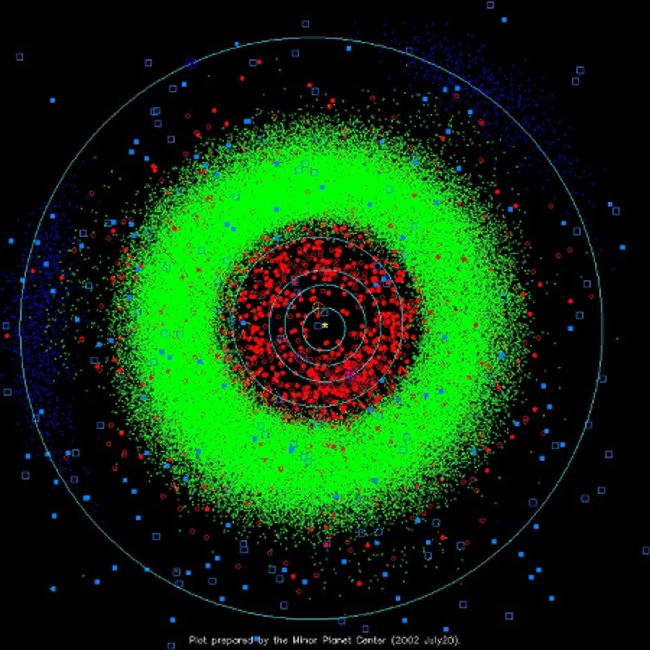 Photo source: MPC, CBAT, CARD Harvard, IAU
Photo source: MPC, CBAT, CARD Harvard, IAU
The inner orbits of the planet are displayed in the form of large circles in computer snapshots - created from actual objects known from July 20, 2002. Green dots represent the sub The main belt planet between Mars and Jupiter. Red dots are stray asteroids on the main belt, creating a small but dangerous risk of hitting the Earth.
Source
During the early days of solar formation, dust and rocks around the Sun were " sucked " together by gravity of the planets. But not all of these components create new planets. An area between Mars and Jupiter becomes an asteroid.
Sometimes, people wonder if the belt is made up of the rest of a destroyed planet or an uninhabited planet. However, according to NASA, the total weight of the belt is lower than the Moon, which is too small to consider as a planet. Instead, the fragments are led by Jupiter, keeping it from being attached to other growing planets.
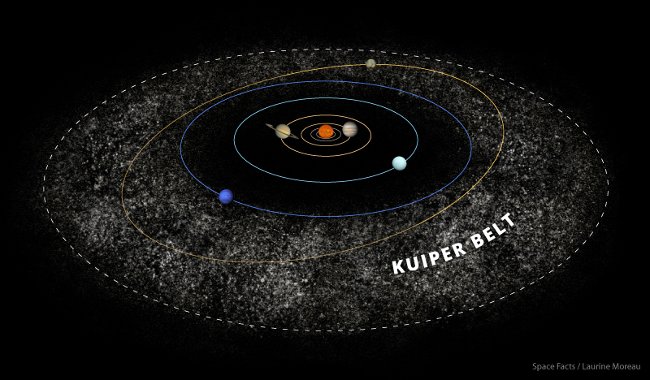
Other planetary observations help scientists better understand the solar system. According to a development theory known as Grand Tack , for the first 5 million years of the solar system, Jupiter and Saturn are thought to have moved toward the Sun before turning and returning. heading out to the solar system. On the way, they will disperse the original asteroid belt forward, then send the flying material back to reload it.
" In the Grand Tack model, the early asteroid belt is cleaned and the surviving members have tested a larger area of the Sun Nebula ," wrote John Chambers of the Carnegie Science Institute in a post. " Perspectives " was published in the Journal of Science .
Our Solar System is not the only planet that boasts an asteroid belt. A dust cloud around a star is called the zeta Leporis, like a young belt. " Zeta Leporis is a relatively young star - about the same age as the Sun when the Earth forms. The system of observations around the zeta Leporis system is similar to what we thought of in the early years of the Solar System. planets and asteroids are created, "said Michael Jura, a professor at the University of California, Los Angeles, in a statement. Now Professor Michael Jura has passed away.
Other stars also show signs of asteroid belts, suggesting that this may be common. At the same time, studies of white dwarfs, Sun-like stars at the final stage, show signs of stone material falling to their surfaces and such belts common around systems. death.
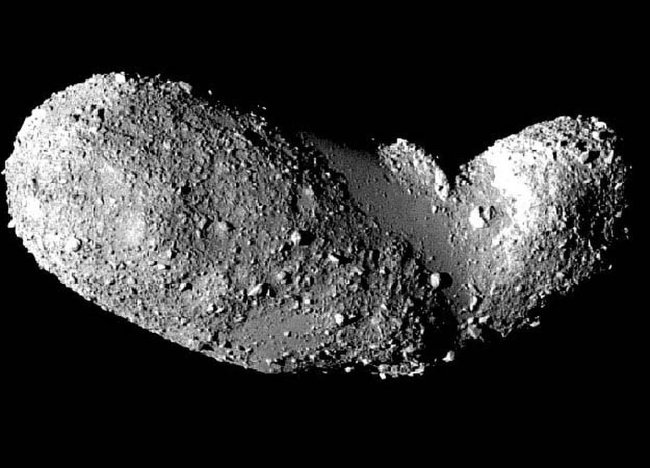 Asteroids, such as Itokawa, described here, are considered loosely rubble tied together, rather than hard rocks.Image source: ISAS / JAXA
Asteroids, such as Itokawa, described here, are considered loosely rubble tied together, rather than hard rocks.Image source: ISAS / JAXA
Ingredient
Most of the Main Belt asteroids are made up of small stones and rocks, but a small part of it contains iron and nickel metals. The remaining asteroids are created by their combination with carbon-rich materials. Some more asteroids tend to contain more ions. Although the asteroid itself is not large enough to maintain the atmosphere, there is evidence that some asteroids may contain water.
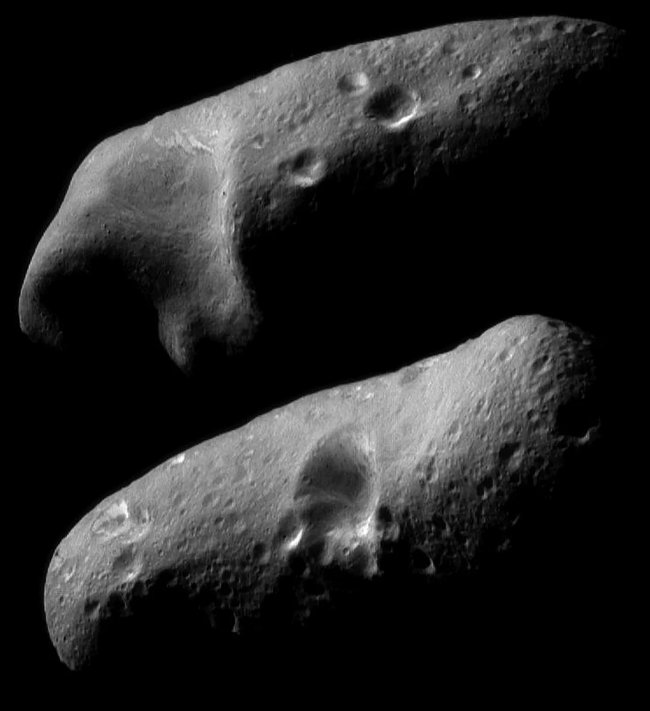 Built and managed by the Applied Physics Laboratory at Johns Hopkins University, Laurel, Maryland, NEAR is the first spacecraft launched in NASA's Discovery Program for small-scale planetary missions. low cost.Photo source: NASA / JPL / JHUAPL
Built and managed by the Applied Physics Laboratory at Johns Hopkins University, Laurel, Maryland, NEAR is the first spacecraft launched in NASA's Discovery Program for small-scale planetary missions. low cost.Photo source: NASA / JPL / JHUAPL
Some asteroids have large and solid structures - more than 16 belts with diameters greater than 150 miles (240 km). The largest asteroids like Vesta, Pallas and Hygiea have a diameter of 250 miles (400 km) and may be larger. This area also contains dwarf planets Ceres. With a diameter of 590 miles (950 km), equivalent to about a quarter of the Moon's size, the unfinished Ceres dwarf planet is considered too small to be an official planet. However, it accounts for about a third of the asteroid belt's weight.
In addition, other asteroids are rubble held by gravity. Most asteroids are not large enough to achieve a spherical shape and instead are irregular, looking like a brown potato. In particular, asteroid 216 Kleopatra is shaped like a dog bone.
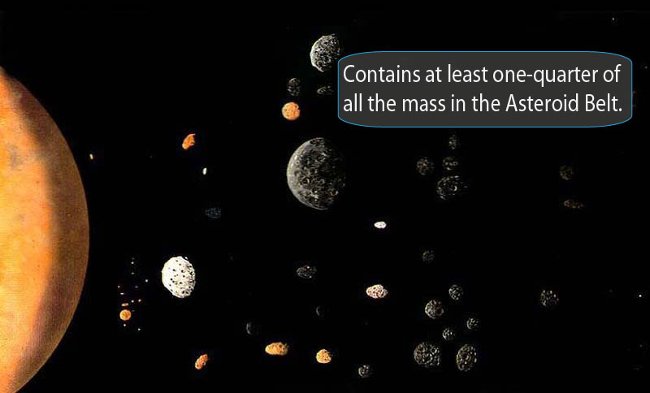
Asteroids are classified into several categories based on their chemical composition and reflectivity, or reflectivity:
- Class C asteroids account for more than 75% of known asteroids. "C" stands for carbon and the surface of this extremely dark asteroids is gray. Carbon chondrite meteorites on Earth have a similar composition and are thought to be fragments broken down by larger asteroids. According to the European Space Agency, although Class C asteroids dominate in the belt, they only account for about 40% of asteroids located near the Sun, including subtypes B, F, and G .
- Class S asteroid is the second most common type, accounting for about 17% of the current known asteroids and dominates the inner region of the asteroid belt. They are brighter, have iron-nickel metal mixed with iron and magnesium silicate. "S" stands for silicaceous .
- The M-type asteroid ( "M" stands for "metallic" metal ) is the last major type, occupying the remaining 8% and settling in the middle of the main belt. These asteroids are quite bright and most of them are made from pure iron-nickel.
- The remaining rare asteroids are type A, type D, type E, type P, type Q and type R.
In 2007, NASA launched a mission, Dawn , to visit Ceres and Vesta. Dawn arrived in Vesta in 2011 and stayed there for more than a year before going to Ceres in 2015. It will remain in orbit around the dwarf planet until the end of the mission.
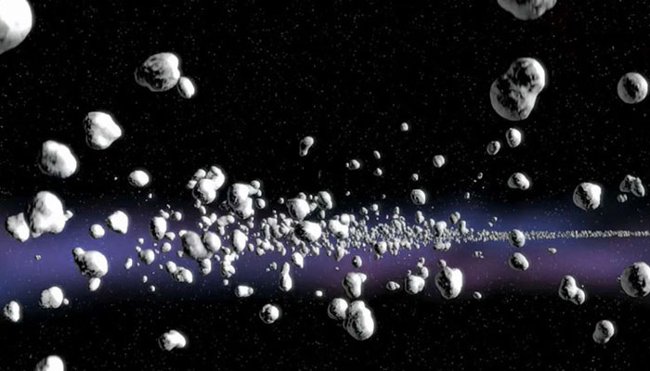
While most asteroids are made up of stone objects, Ceres is an icy object. Suggestions for organic matter discovered by Dawn suggest that it may have formed longer in the solar system before landing in the belt. When organic substances are only visible on the surface, that does not mean that more materials can be found on this dwarf planet.
Maria Cristina De Sanctis , from the Institute of Space Astrophysics and Space Aeronautics in Rome, answered Space.com by email: " We cannot rule out other places that are rich in organic matter. survey, or lower detection limit ".
Building a belt
The main belt is between Mars and Jupiter, located about 2-4 times the distance from the Earth to the Sun and stretching about 140 million miles. Objects in the belt are divided into 8 subgroups and named after the main asteroids in each group. The names of these groups are Hungarias, Floras, Phocaea, Koronis, Eos, Themis, Cybeles and Hildas.
Although Hollywood often exhibits boats making close calls through asteroid belts, the trip is generally not much important. Some spacecraft safely crossed the asteroid strip without any trouble, including NASA's New Horizons mission to Pluto.
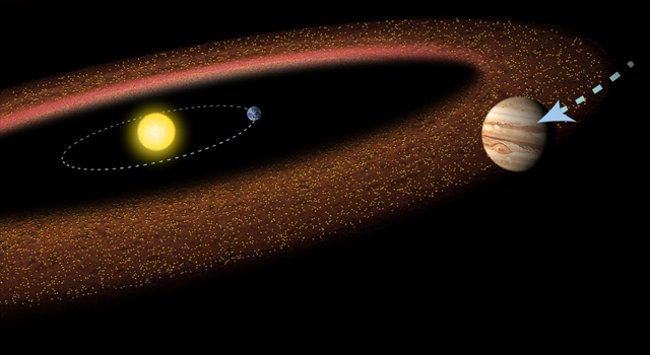
Researcher Alan Stern of New Horizons wrote: " Fortunately, the asteroid belt is very large, although its weight is small, but the opportunity to enter it is almost gentle - less than a billion. Want to get close to an asteroid to study the details of the asteroid, you need to target it . "
In the asteroid belt are empty areas, called Kirkwood gaps . These gaps correspond to orbital resonance with Jupiter. The gravitational gravity of the giant planets keeps these regions farther than the rest. In other resonances, asteroids can focus more.
Explore asteroid belt
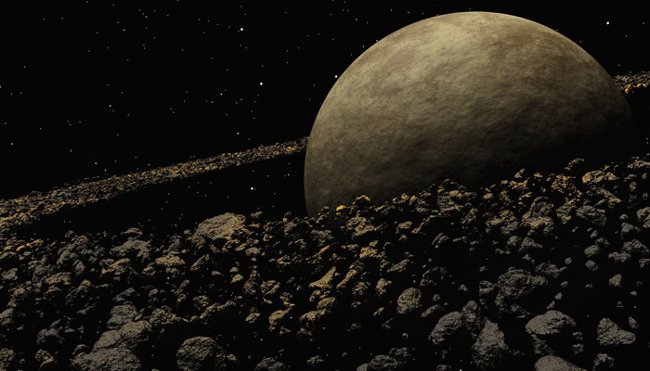
Johann Titius , the 18th-century German astronomer, noted a mathematical model in the arrangement of planets and used it to predict the existence of Mars and Jupiter. Astronomers have " rummaged" the sky in search of this missing part. In 1800, 25 astronomers formed a group called " Celestial Police ", each searching for 15 degrees of Zodiac for the missing planet. However, the discovery of the first planet in this region came from an Italian astronomer named Giuseppe Piazzi , who named it Ceres. The second planet - Pallas, was found less than a year later.
For a period of time, both objects are called planets. But the rate of discovery of these objects increased, and in the early 19th century, more than 100 planets were found. Scientists quickly realized that these planets were too small to be considered planets and they began to be called asteroids.
See also: Discover the incredible facts about our cosmic planet
Having fun!
You should read it
- About 6 billion years from now, the light from the dying Sun will burn the asteroid belt
- NASA has just discovered an asteroid with an extremely 'weird' shape
- The asteroid is similar in size to the Pyramids of Giza, and is likely to crash into Earth on May 6, 2022
- NASA's spacecraft soared to the asteroid that could destroy the Earth for specimens
- The deviating object in the Kuiper Belt may be the 10th planet of the solar system
- The meteor glows and dissolves leaving a golden light trail winding in the sky of Japan
- The 6 largest meteorite blocks are detected on the surface of the Earth
- A more than 4-kilometer asteroid is about to cross the Earth with the closest distance ever reached
May be interested
- Detecting an asteroid the size of an olympic swimming pool, topping the list of Earth collision risk
 called 2023 dw, the asteroid is about the same size as a standard olympic swimming pool.
called 2023 dw, the asteroid is about the same size as a standard olympic swimming pool. - 'City killer' 610 m rushes to Earth, can be seen tonight
 asteroid 2013 nk4 is classified as 'potentially dangerous' and has just passed close to earth.
asteroid 2013 nk4 is classified as 'potentially dangerous' and has just passed close to earth. - It turns out 15 'facts' about the Earth and the universe that we still believe is completely wrong
 the sun is yellow, nothing faster than light, the moon has a dark side ... are the 'facts' that many people still believe and share over the years. but they are all inaccurate scientific information that has been rejected by science.
the sun is yellow, nothing faster than light, the moon has a dark side ... are the 'facts' that many people still believe and share over the years. but they are all inaccurate scientific information that has been rejected by science. - NASA spacecraft encountered unknown structures surrounding the solar system
 at what seemed to be the end of the solar system, nasa new horizons discovered signs of a 'second kuiper belt'.
at what seemed to be the end of the solar system, nasa new horizons discovered signs of a 'second kuiper belt'. - An ancient asteroid once collided with and 'flipped' Jupiter's moon Ganymede
 the history of our solar system can be likened to a picture of unpredictable change.
the history of our solar system can be likened to a picture of unpredictable change. - NASA has just discovered an asteroid with an extremely 'weird' shape
 asteroids are rocky, airless bodies that orbit the sun. asteroids are smaller than planets but larger than meteorites and are not comets.
asteroids are rocky, airless bodies that orbit the sun. asteroids are smaller than planets but larger than meteorites and are not comets. - How to install animated weather wallpaper on iPhone
 tweaking asteroid on iphone will create a dynamic weather effect on the lock screen for jailbroken ios devices.
tweaking asteroid on iphone will create a dynamic weather effect on the lock screen for jailbroken ios devices. - How to fix Unknown Hard Error on Windows 10
 if you see the system warning dialog with unknown hard error suddenly appearing and then the windows 10 screen turns black, read the following article to know how to fix it.
if you see the system warning dialog with unknown hard error suddenly appearing and then the windows 10 screen turns black, read the following article to know how to fix it. - The deviating object in the Kuiper Belt may be the 10th planet of the solar system
 us scientists found evidence of the existence of a planet lurking in the kuiper belt about the size of mars. most likely this is the 10th planet of the solar system.
us scientists found evidence of the existence of a planet lurking in the kuiper belt about the size of mars. most likely this is the 10th planet of the solar system. - How to find missed calls from unknown numbers on iPhone
 after updating iphone to ios 26, missed calls from unknown numbers do not show up in the calls or recents section of the phone app.
after updating iphone to ios 26, missed calls from unknown numbers do not show up in the calls or recents section of the phone app.

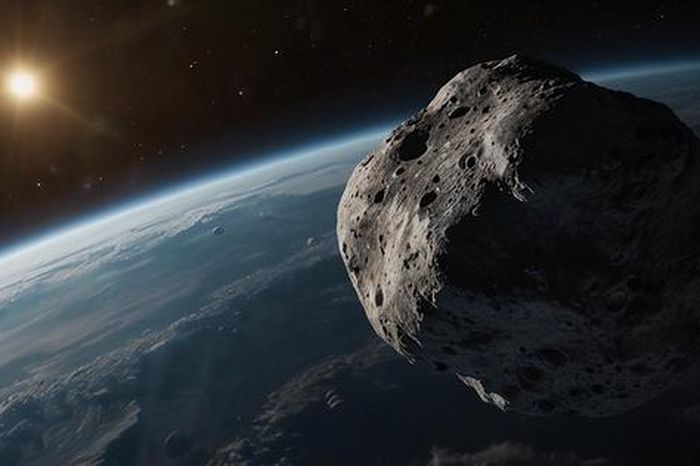








 Mysterious cosmic signals of aliens challenge the scientific world
Mysterious cosmic signals of aliens challenge the scientific world SpaceX successfully launched the most 'heavy' rocket to geostationary orbit
SpaceX successfully launched the most 'heavy' rocket to geostationary orbit Stephen Hawking and 32 leading physicists signed a letter to protect the doctrine of the origin of the universe
Stephen Hawking and 32 leading physicists signed a letter to protect the doctrine of the origin of the universe Gravitational waves can be the key to revealing the existence of another dimension in the universe
Gravitational waves can be the key to revealing the existence of another dimension in the universe NASA discovered water in planetary Neptune's atmosphere
NASA discovered water in planetary Neptune's atmosphere Humans have created a 'giant protective ring' around the Earth
Humans have created a 'giant protective ring' around the Earth